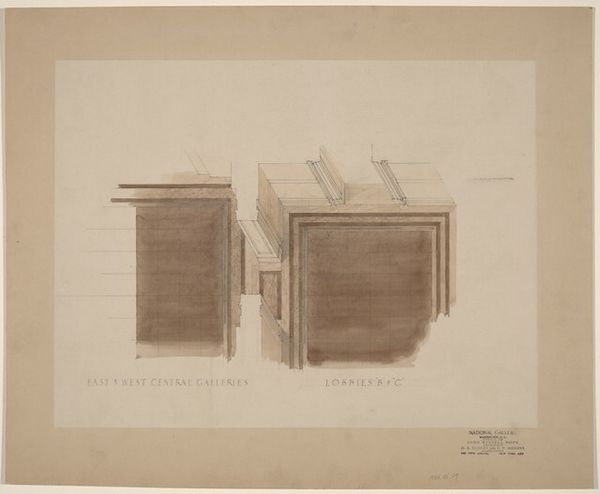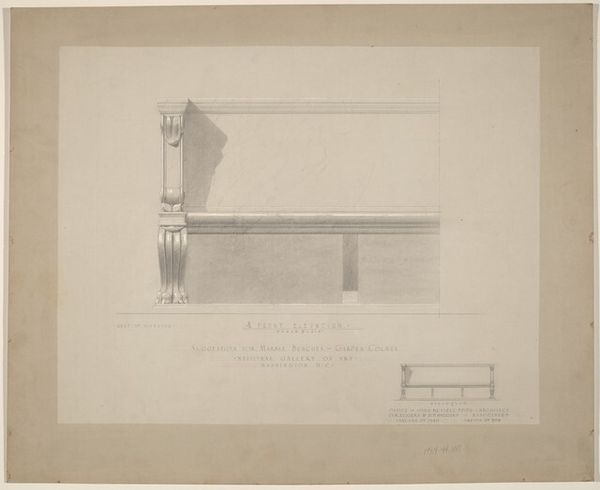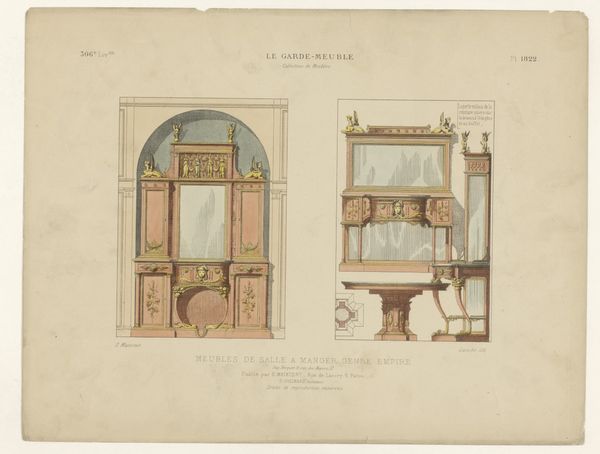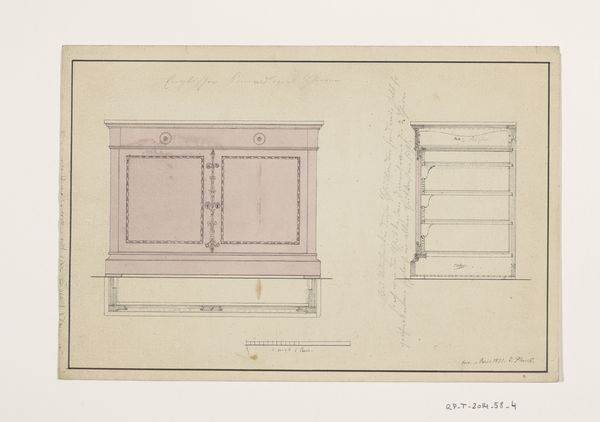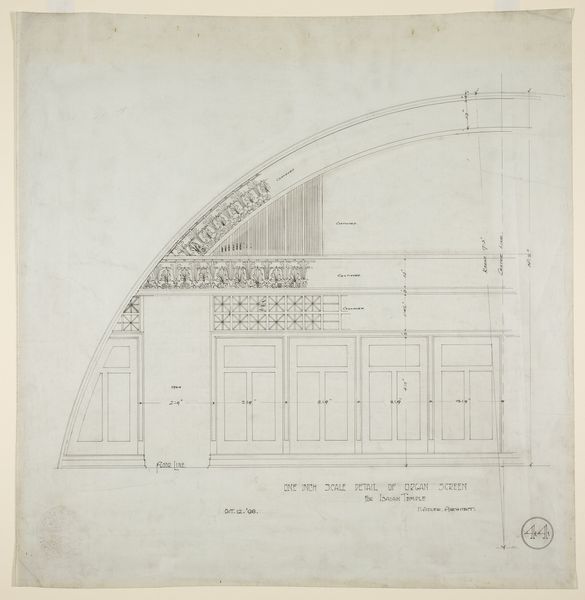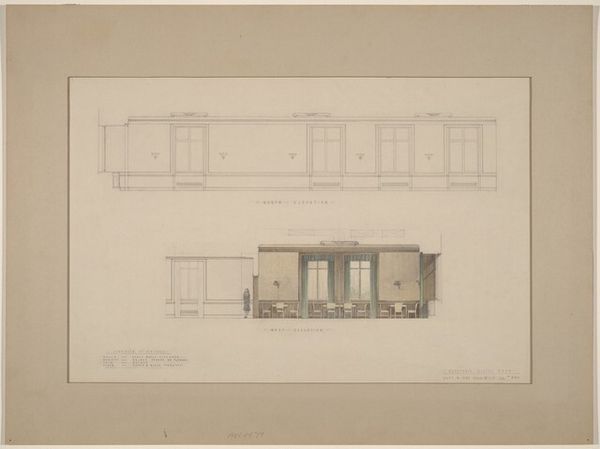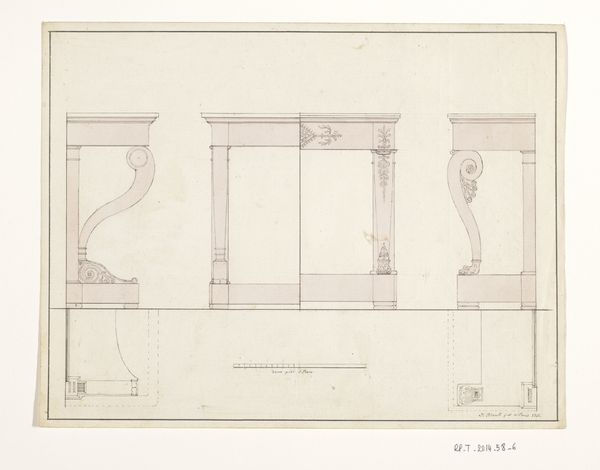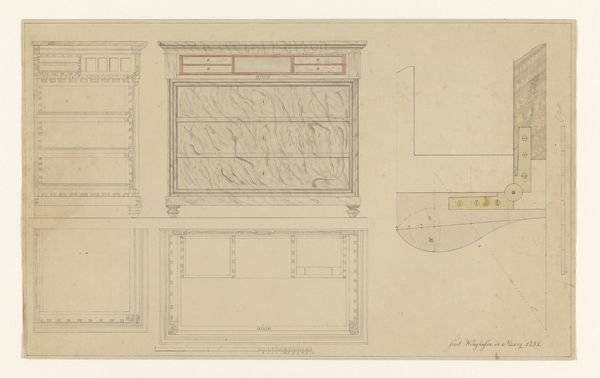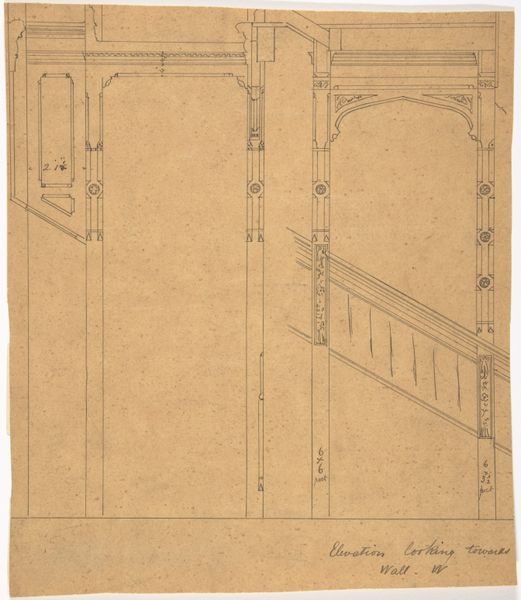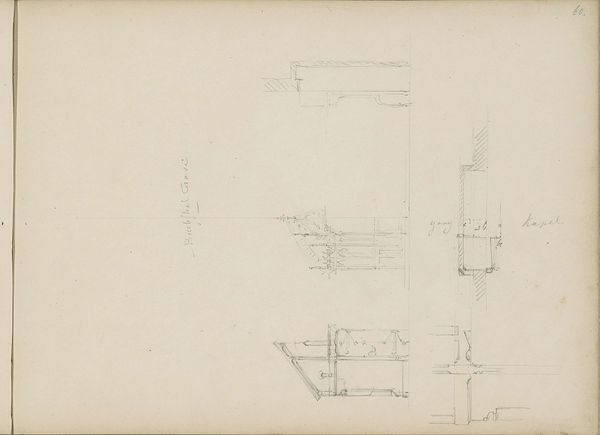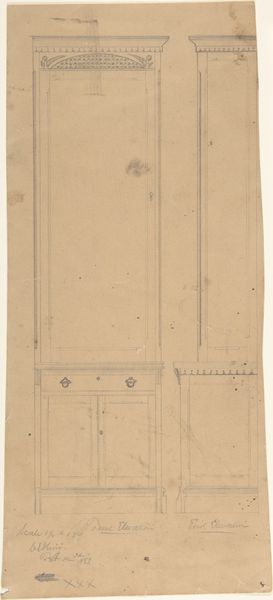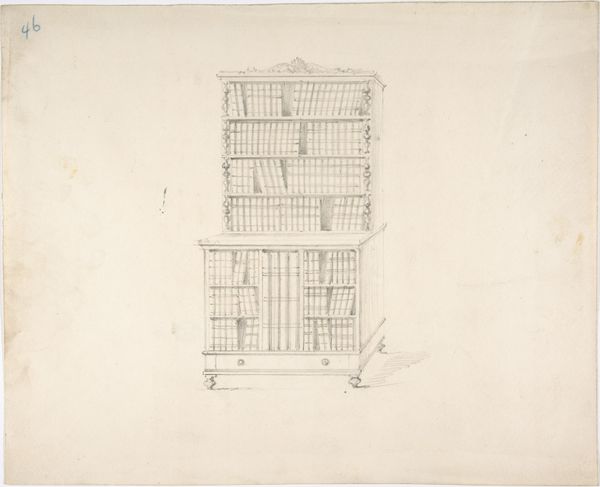
Lobbies "B" and "C": East and West Garden Courts
0:00
0:00
drawing
#
photo of handprinted image
#
drawing
#
aged paper
#
toned paper
#
light pencil work
#
homemade paper
#
ink paper printed
#
pencil sketch
#
incomplete sketchy
#
etching
#
watercolor
Dimensions: overall: 39.6 x 45 cm (15 9/16 x 17 11/16 in.)
Copyright: National Gallery of Art: CC0 1.0
Editor: Here we have "Lobbies 'B' and 'C': East and West Garden Courts" by Eggers and Higgins, Architects, rendered in drawing, maybe pencil and watercolor? The muted tones give it a ghostly, unfinished feel. What do you see in this piece? Curator: The materiality speaks volumes. Look at the paper - possibly handmade, toned to resemble aged parchment. This choice elevates what might otherwise be a simple architectural sketch. It transforms it into an object imbued with history, mimicking the grand spaces it depicts. Editor: So, it's about the "craft" of the drawing itself, not just the design it represents? Curator: Precisely. Consider the light pencil work and ink; these humble materials contrast sharply with the imposing nature of the lobbies themselves. It invites questions about the means of production behind these monumental structures, the labor involved. This isn't just a drawing; it's a document, evidence of a process. How does that materiality change your initial impression? Editor: I see what you mean. Focusing on the paper and pencil makes me think about the actual hands that created this image and maybe, how the cost of the materials used can determine the artwork itself. Curator: Exactly. This shifts our attention from the aesthetic to the economic, forcing us to consider the social context of its creation and potential consumption. Think about who this drawing was intended for and what value was placed on architectural drawings during that time. The value lies not just in its representational quality, but also in the labor, materials, and social relationships embedded within it. Editor: It is fascinating how focusing on the materials can change the meaning of an artwork! I definitely have a different appreciation for it now. Curator: Indeed, it encourages us to look beyond the surface and understand the deeper layers of production, labor, and value that are woven into its fabric.
Comments
No comments
Be the first to comment and join the conversation on the ultimate creative platform.
